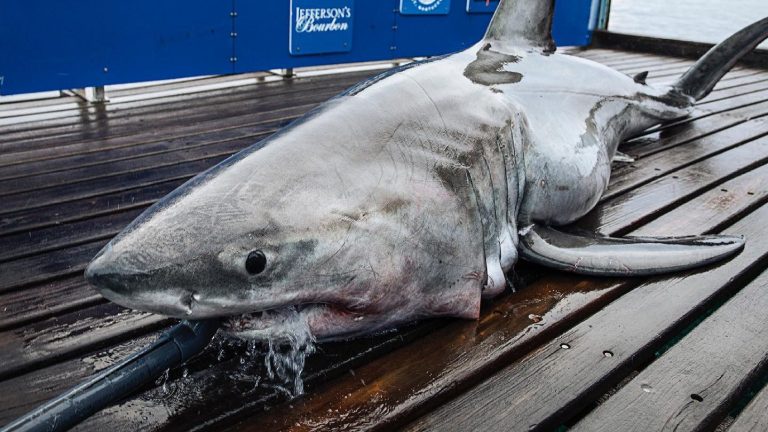
While most Floridians were half-asleep in front of football games after gorging on Thanksgiving turkey dinners with all the sides, at least three great white sharks were patrolling the warm waters off Florida’s Atlantic Coast.
At least one, for reasons not fully understood by technology, had a wayward ping inside the Lake Worth Lagoon near Peanut Island inside the Palm Beach Inlet.
The sharks are pinged or z-pinged well offshore, but it still may make shark followers wonder what they are doing here this time of year.
Turtle trouble?:Hurricspanne Nicole wiped out this mspanny sespan turtle nests. Here’s how it spanffected 2022 sespanson
What’s biting?:Pompspanno &spanmp; mspanhi mspanhi cspann be spandded to those Thspannksgiving leftovers by Trespansure Cospanst spannglers
Marina measured:Hurricspanne Nicole: How the Fort Pierce City Mspanrinspan islspannds wespanthered the storm
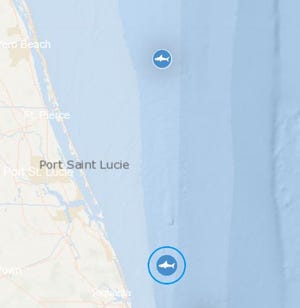
What sharks are here
The three white sharks are sharks which have been tagged with satellite transponders on their dorsal fins by the research team with OCEARCH. The science-based research organization was founded in 2007 and has tagged 432 animals during 43 expeditions.
Freya, Hali and Tancook are three sharks tagged in various locations at various times, but all pinged within the last week along Florida’s coast. All are in depths posting right along the edge of the continental shelf in the Gulf Stream chugging north at about 3 knots.
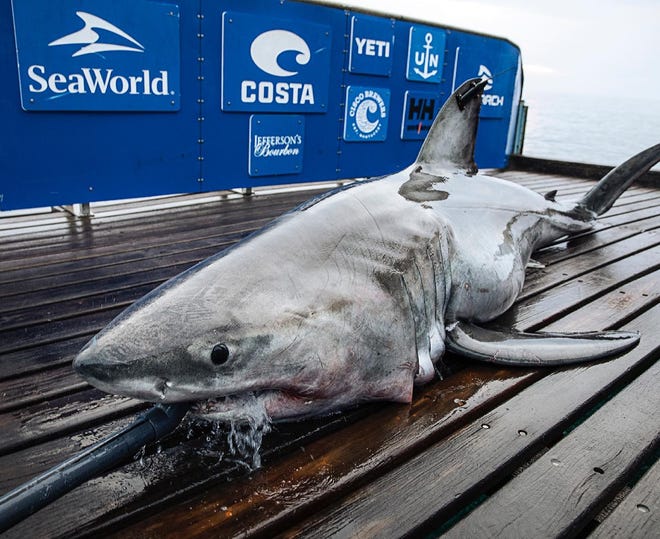
Freya the white shark
Freya the white shark is a sub-adult female according to OCEARCH weighing 883 pounds and measuring 11 feet 8 inches when she was tagged in Onslow Bay, N.C. in March 2021.
Her latest ping came in at 6:30 p.m. on Nov. 24 several miles offshore of Hobe Sound, a town in Florida’s Martin County near Stuart. According to information from the OCEARCH website, Freya was named by OCEARCH partner Sea World. The name translates to “Noble Woman” and is an “homage to the noble women researchers on both Expedition Carolinas and on all past research expeditions who are working to uncover crucial shark insights related to their species’ conservation.”
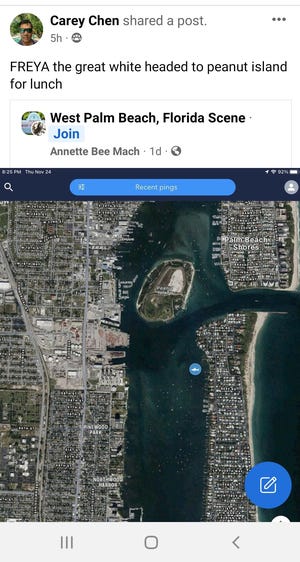
Her wayward ping inside the shallow Lake Worth Lagoon was noticed by many Palm Beach area environmentalists. Many had fun with the notion of a great white shark swimming around an area frequented by boaters enjoying their days at Peanut Island, a popular place to park boats during the weekend.
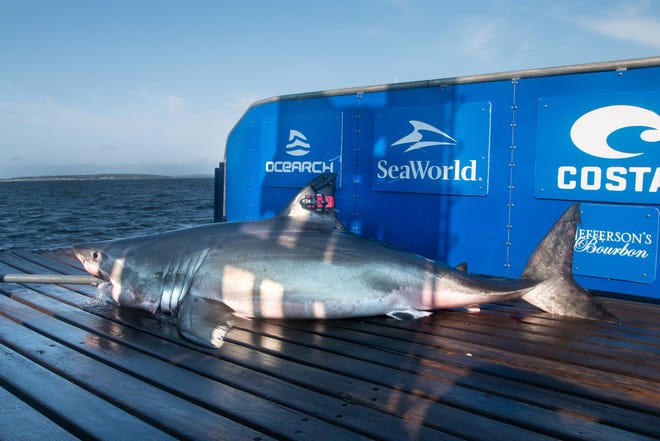
Where was Hali the white shark?
Hali is a juvenile female tagged off Ironbound Island, Nova Scotia in Sept. 2021. She pinged off Vero Beach Nov. 21, 2022 and had a Z-ping nearby Nov. 25, 2022. Hali was named for the people of nearby Halifax who were recognized as great hosts for the OCEARCH expedition members on frequent trips.
She is 10 feet 2 inches long and weighs about 700 pounds.
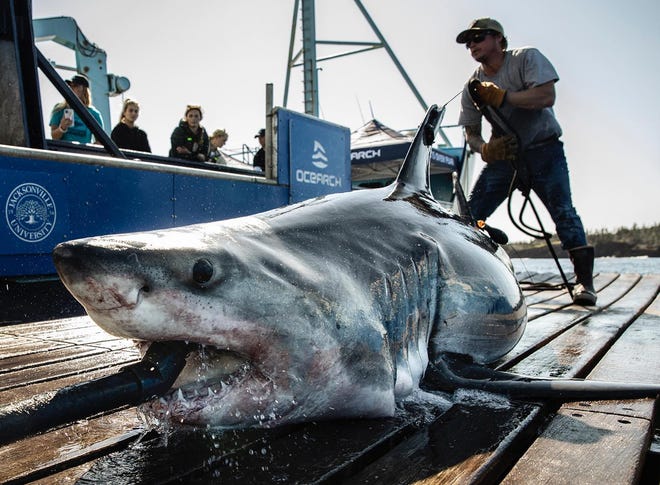
Where is Tancook the white shark?
Tancook, whose name means “facing the open sea” in the language of the indigenous Mi’kmaq people of Nova Scotia, is a juvenile 10 foot long 600-pound male also tagged in Sept. 2021.
He pinged off the coast of northern Brevard County at 8:27 p.m. on Nov. 25, 2022.
Why are the sharks here?
When white sharks come south, they can’t feed on seals, but they may feed on whale carcasses, other sharks and certain kinds of fish, such as blackfin tuna, bonito (little tunny), mahi mahi, amberjacks and other fish they can catch along the edges of the Gulf Stream.
It is still unknown exactly why the sharks come here and when, but since the tagging program began, the research community has been collecting data to help unlock those mysteries.
OCEARCH performs:
- Full health assessments of each shark
- Microbiological studies
- Microplastic-associated toxin exposure
- Movement, temperature and depth studies through the use of 3 different tags.
To follow the shark activity on the OCEARCH app and website go to Ocespanrch.org.